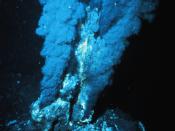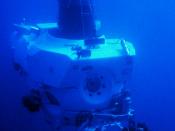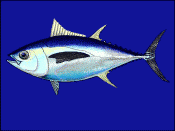Hydrothermal Vents
After months of anticipation, I finally get to go on the Alvin Submersible. Our main assignment is to study the marine life in the hydrothermal vents. Since the hydrothermal vents are located so deep in the ocean, we had no other choice but to use the Alvin submersible. Our current model can travel to depths as low as 14,764 feet while carrying three people, which is plenty for our operation. We are planning to do our plunge in the Pacific Ocean just off the coast of the Galapagos Islands.
The reason we choose the coast off the Galapagos Islands is because of the hydrothermal vents located there. There are some different types of marine life located in this area, and we like to grab some samples. We are now all loaded into the Alvin, and are waiting for the crane to drop us into the ocean.
Starting our journey down towards the hydrothermal vents, we find our self in the epipelagic zone first.
This is the zone where most of the visible light exists since it is at the top of the zones, up to about 200 meters. The life forms we find in this zone are common to use photosynthesis, since light is abundant in this zone. I noticed that the fishes seen in this zone are very diverse, I am seeing thousands of different species of mostly small fish, however there are some sharks and whales also in this zone. As we plunge deeper we gain closer and closer towards the mesopelagic zone.
The mesopelagic zone is between 200 and 1000 meters deep. This is the zone that my crewmates and I call the twilight zone, due to its low light. We begin to see the twinkling lights of bioluminescent creatures, due to their photophores.


